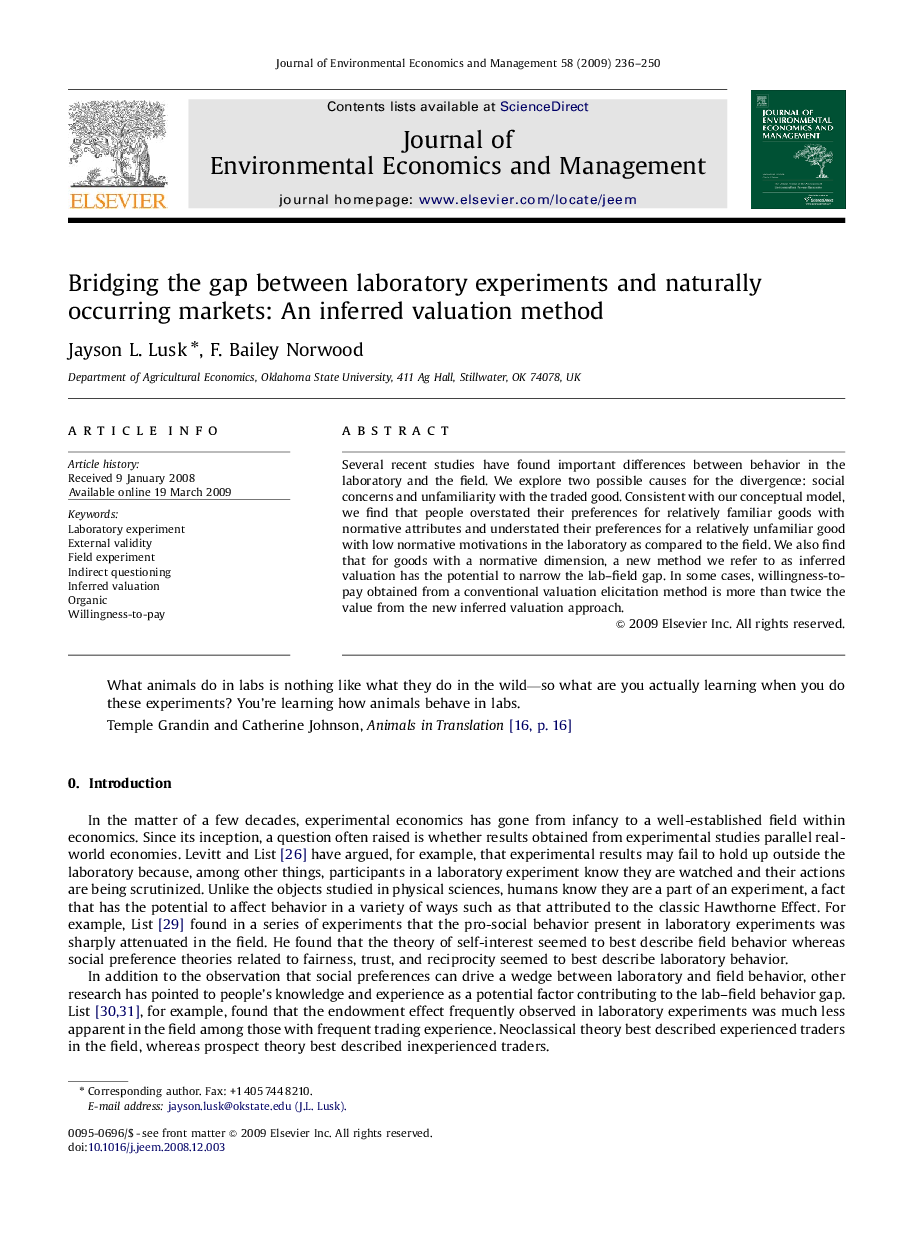| Article ID | Journal | Published Year | Pages | File Type |
|---|---|---|---|---|
| 959095 | Journal of Environmental Economics and Management | 2009 | 15 Pages |
Several recent studies have found important differences between behavior in the laboratory and the field. We explore two possible causes for the divergence: social concerns and unfamiliarity with the traded good. Consistent with our conceptual model, we find that people overstated their preferences for relatively familiar goods with normative attributes and understated their preferences for a relatively unfamiliar good with low normative motivations in the laboratory as compared to the field. We also find that for goods with a normative dimension, a new method we refer to as inferred valuation has the potential to narrow the lab–field gap. In some cases, willingness-to-pay obtained from a conventional valuation elicitation method is more than twice the value from the new inferred valuation approach.
